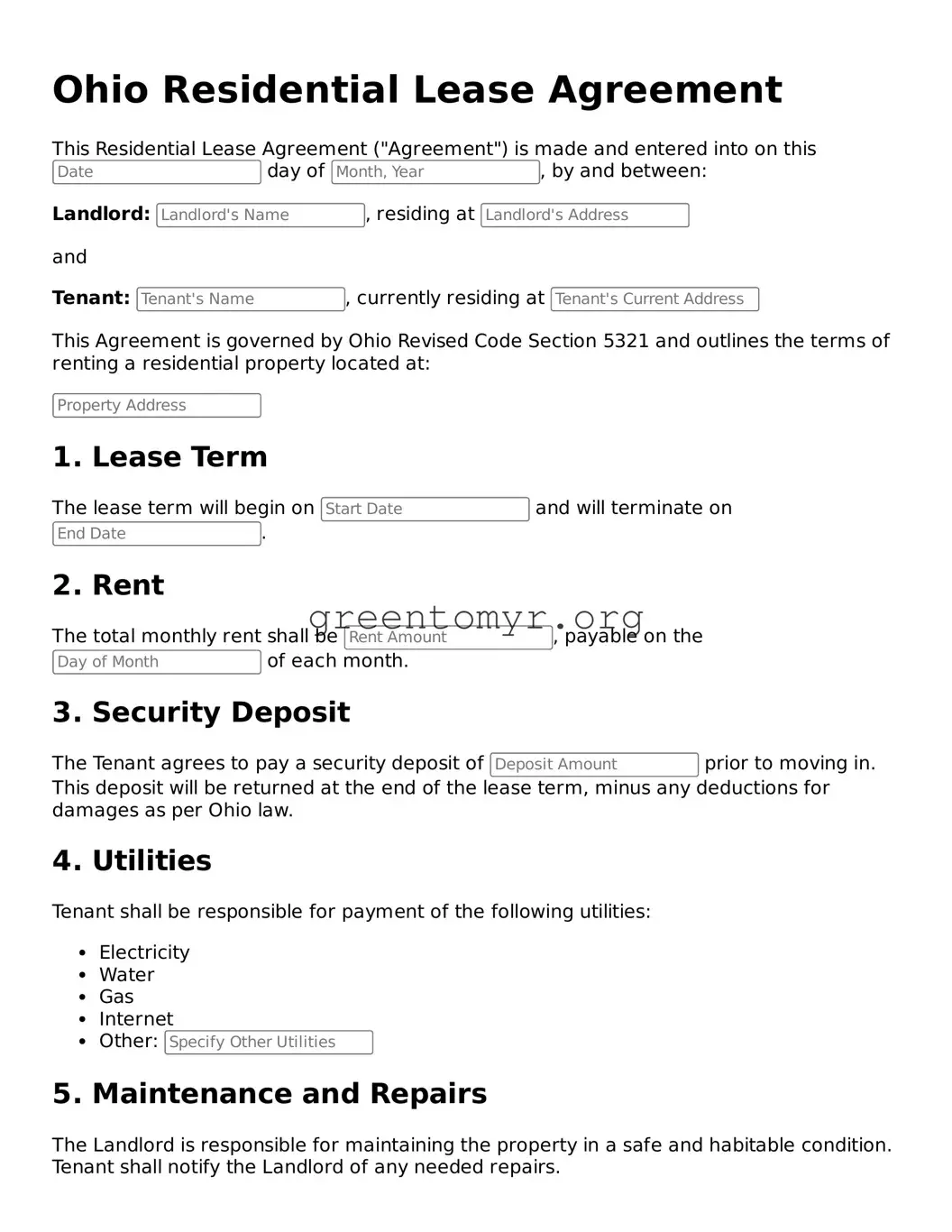Residential Lease Agreement Form for the State of Ohio
The Ohio Residential Lease Agreement is a legal document that outlines the terms and conditions between a landlord and a tenant for renting residential property in Ohio. This form is essential to establish the rights and responsibilities of both parties, ensuring a clear understanding of the rental arrangement. To get started on your rental journey, fill out the form by clicking the button below.
